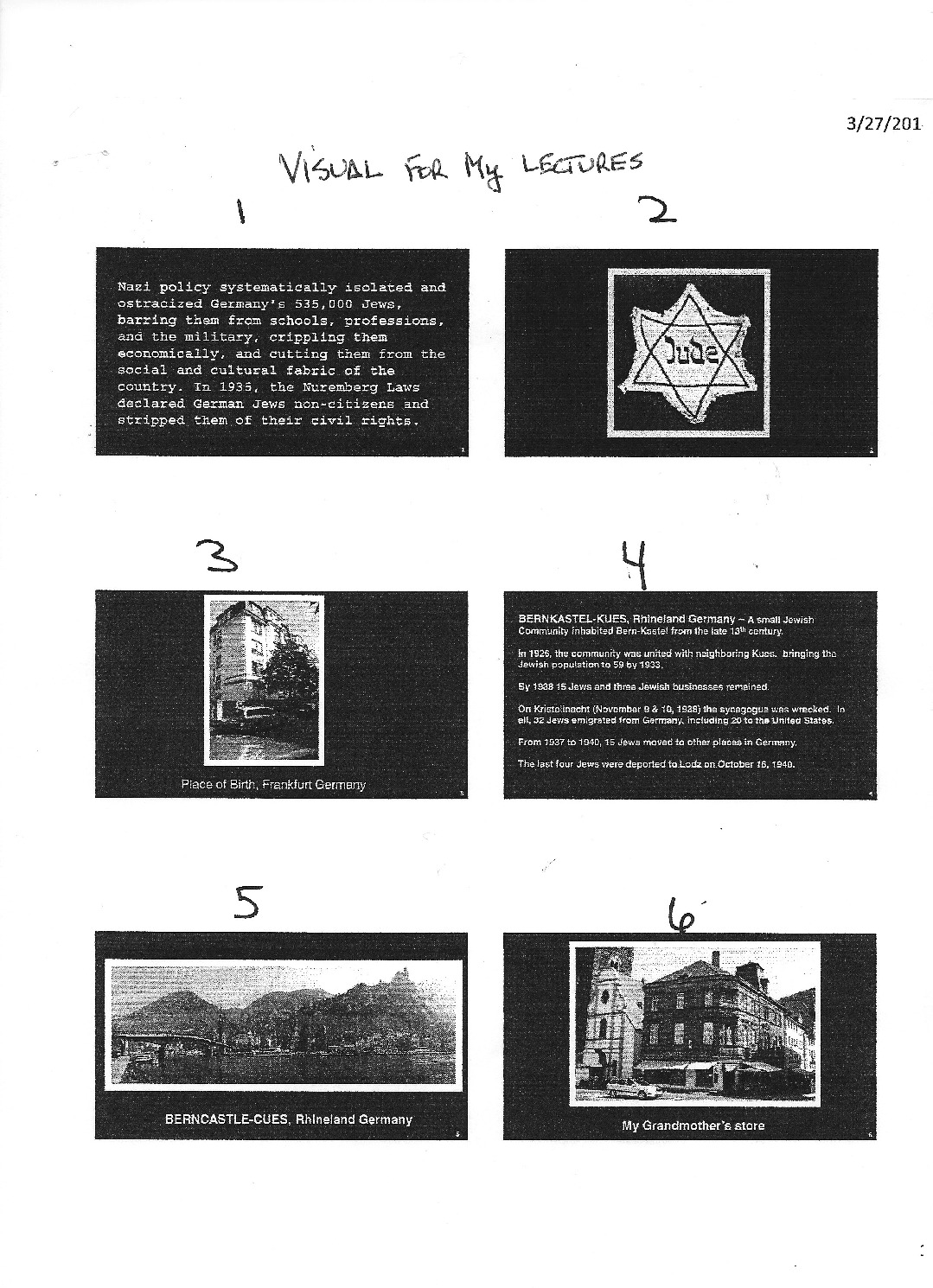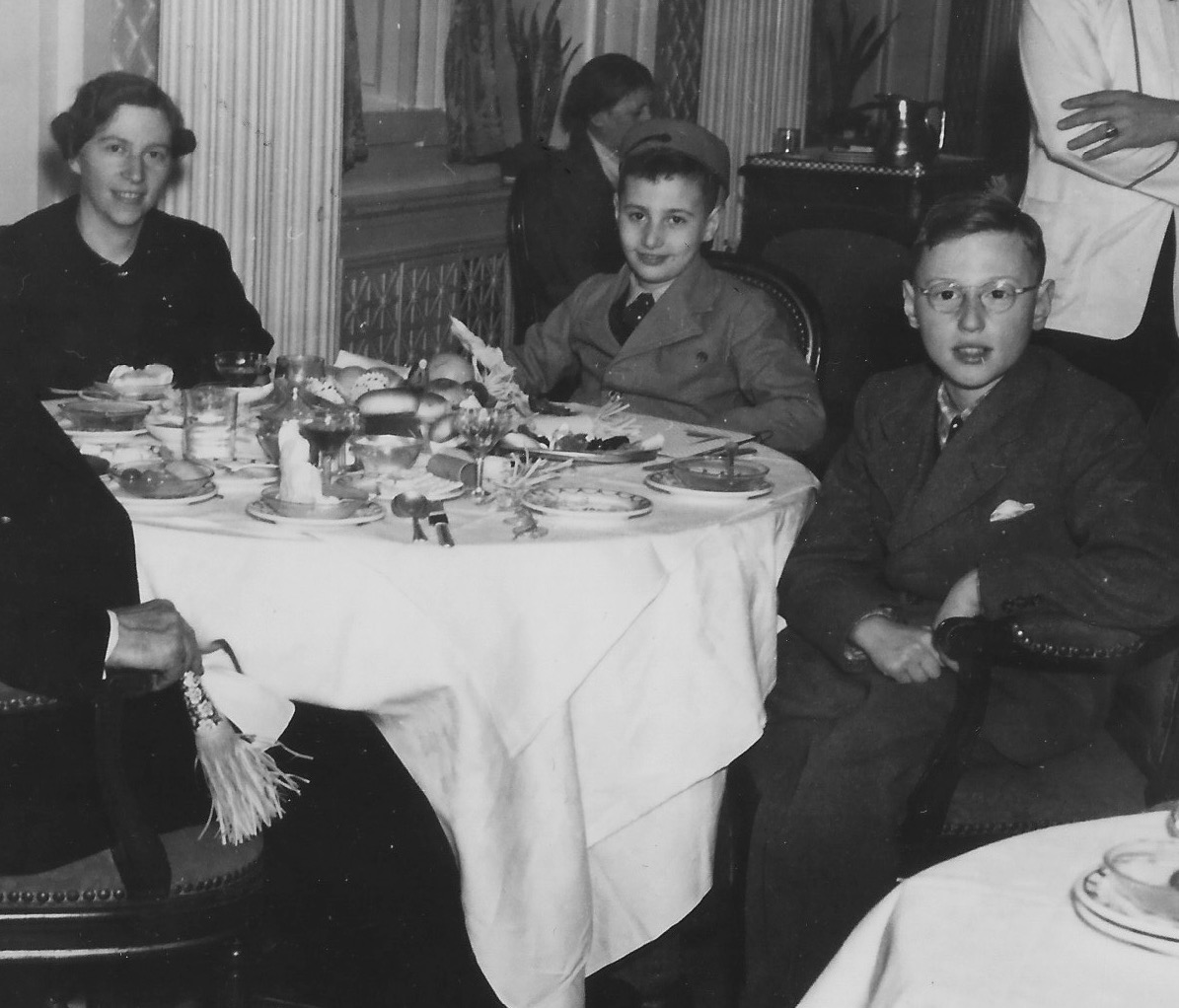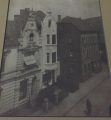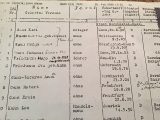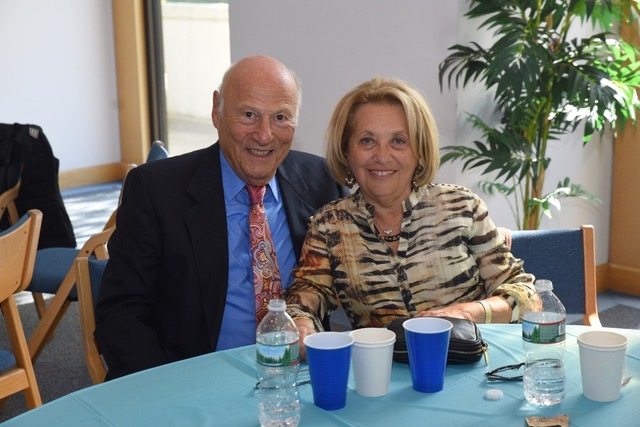- Local Survivor registry
- Erwin M. Ganz
- Local Survivor registry
- Erwin M. Ganz
Survivor Profile
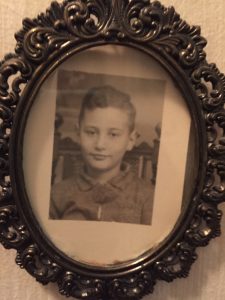
Erwin
M.
Ganz
(1929 - PRESENT)
PRE-WAR NAME:
ERWIN M. GANZ
ERWIN M. GANZ
PLACE OF BIRTH:
FRANKFURT AM MAIN, GERMANY
FRANKFURT AM MAIN, GERMANY
DATE OF BIRTH:
AUGUST 22, 1929
AUGUST 22, 1929
LOCATION(s) BEFORE THE WAR:
BERNKASTEL-KUES, GERMANY LOCATION
BERNKASTEL-KUES, GERMANY LOCATION
LOCATION(s) DURING THE WAR:
NEWARK, NEW JERSEY
NEWARK, NEW JERSEY
STATUS:
CHILD SURVIVOR, REFUGEE
CHILD SURVIVOR, REFUGEE
RELATED PERSON(S):
ROSALEE GANZ - Spouse (Deceased),
SANDRA GANZ - Spouse,
PETER J. GANZ - Son,
ERIC GANZ - Son,
PAMELA FITZSIMMONS - Daughter,
JONATHAN COGAN - Son,
8 Grandchildren
-
BIOGRAPHY BY Erwin Ganz
Erwin Ganz was born in Frankfurt, Germany on August 22, 1929. He lived there until he was three years old, when his family was forced to leave, and had to relocate to Bernkastel-Kues, Germany. He emigrated from Germany to the United States in April 1939 at age nine and the family settled in Newark, New Jersey. Erwin graduated from Weequahic High School and received a BS in accounting from Seton Hall University while being employed full time at Ronson Corporation. During this period, he was an active member of the National Guard. Erwin was a Director at the Ronson Corporation, where his career spanned six decades. Since retirement, Erwin has spoken at numerous colleges, high schools, public schools and libraries, churches and synagogues, about his life as a young boy growing up in Nazi Germany before, during and after Kristallnacht. Erwin and his wife Sandra reside in Warren and are members of Temple Har Shalom. See Rabbi’s testimonial letter to Erwin Ganz in Related Media.
Editor’s Notes:
Refer to Erwin Ganz Survivor Lecture Visuals in Related Textual Materials below.
-
SURVIVOR INTERVIEW:
ERWIN GANZ INTERVIEW
Date: May 9, 2017
Location: Ganz Residence
Interviewer: Nancy GorrellQ: Describe your family background.
I was born on August 22, 1929 in Frankfurt Am Main, Germany to Joseph and Anna Ganz. My father was born on February 23, 1893. He was 97 when he passed.Q: Was your father’s family from Frankfurt?
Oh yes. Our family went way back—generations and generations of Germans. My father fought for Germany in World War I. He was wounded four times, and he was a prisoner of war in France for seven years. His parents died during that period of time.Q: What did your father do for a living in Frankfurt?
He worked in a bank in Frankfurt until Hitler came to power. He was then discharged. He moved the family to my grandmother’s home in Bernkastel-Kues because he couldn’t get a job in Frankfurt. My grandmother had a small department store in Bernkastel, and he joined the business. I was two years old when we moved there. I still remember my grandfather who died 1932.
Q: What do you remember about your grandmother?
She lived in Kues. Her name was Emma Lazarus, but she wasn’t the poet quoted on the Statue of Liberty. She had one brother. She owned a business selling men’s, women’s, and children’s clothing. I still have a picture of the store. She was well known in both towns. Bernkastel was connected to Kues by a bridge and everyone knew my grandmother. It was a very successful store. It was right over the bridge on the corner. Her brother had a store there selling shoes. Her nephew was one of the very first young men to go to Palestine. It was in 1935 or 1936. He was killed by the Arabs. The Israel government invited both parents to Israel and provided them housing. They left Germany in 1937 and they lived and died in Israel.
Q: Do you have any siblings?
Yes. I had one brother, four years older, Robert. When I came over, I was nine years old and Robert was 13.Q. Was your family religious? What were your memories growing up?
My family celebrated the holidays. We were reform Jews. When my father was in Frankfurt, they belonged to a synagogue. My brother was the last Bar Mitzvah in that synagogue in Bernkastel before the Nazi’s destroyed it during Kristallnacht (the Night of Broken Glass on November 10, 1938).
Q: Describe your schooling or early education.
When I was five years old, the local school system refused to enroll me because I was a Jew. So I was enrolled in a Jewish school in Wittlich, a town thirty to thirty-five miles away from my home. I had to take a train to school every day by myself. The school was near a synagogue, and every Friday afternoon I went for Jewish studies. The school was a one-room schoolhouse with one teacher, professor Hartman and he only taught boys from ages 5-13.
Q: Do you remember any persecution as a 5 year-old in your school?
I remember everything. When I was five years old, it wasn’t easy. The Hitler Jugend (Hitler youth) would harass us, call us names, and on occasion steal our books after we got off the train in Wittlich. They were waiting at the train station. The police were there, but they just turned their backs and did nothing. I was at that school until I was eight years old when Kristallnacht occurred.
Q: What are your memories of Kristallnacht?
When I came home from school on Nov 9, 1938, my mother was waiting for me at the train station. This was very unusual because I always walked home alone. She held a banana, which at that time was a delicacy. As we walked home, she gave me the banana to distract me from the horrendous sight I was about to see. Glass was scattered on the street and in our front yard, and as I walked into my house, the Hitler Jugend slashed all of the mirrors with a hatchet as well as the picture frames, sofas and chairs, and on the way upstairs to the bedrooms, they smashed the doorframes with hatchets. The bedrooms were heated by coal burning stoves, these were ripped from the foundations and thrown onto the beds. All this was done during the day on Nov. 9, 1938, by the Hilter Jugend boys, who were 16, 17 and 18 year old. They were the children of the parents who were customers in my grandmother’s store. If the parents had helped us, their own children would have reported them to the Gestapo, and their parents would be sent to jail. That same night which became known as Kristallnacht, the “Night of the Broken Glass,” became the beginning of Hitler’s extermination of the Jews. They burned the only synagogue in town where my brother was the last Bar Mitzvah, and they burned and robbed all the Jewish owned stores including my grandmothers. I still remember seeing flames in the sky at night from my bedroom, and I remember the Gestapo coming into the house that night to take my father away. Thank god my father was already in America.Q: How and when did your father get to America?
My smart grandmother knew that the family had to get out of Germany. But where? My grandmother had a 2nd cousin living in Missouri. She wrote to him to sponsor everyone in the family. The sponsor was required to put money in the bank so the immigrant wouldn’t be a burden to the State. This cousin wrote back he was in his 90s, in poor health, and did not have enough money to sponsor the entire family. My grandmother pleaded with him to at least get my father out of the country; my father left Germany in March 1938, on the ship President Harding, landing in Newark. While my father was on the ship, the cousin in Missouri died. If this cousin had died six weeks earlier, most likely I would not be here today.Q: How and when did rest of your family come to America?
At that time in Germany, they monitored the communications of all mails sent out of Germany, but my father and mother had a unique system to thwart the Nazis. My mother would put a lock of my hair in the envelopes that told my father things were “ok” and without a lock, things were “not ok,” and he was to hurry up and get us out of Germany. Finally, we were able to leave. In April 1939, my brother, mother and myself left on the ship, President Roosevelt. (See family photo on board). My grandmother left on one of the last boats out of Germany in 1941. Many other of our family members were not so lucky, and they died in concentration camps; some family members when to Shanghai, China, that welcomed Jews at the time; my uncle and his family went to Southern Rhodesia that welcomed Jews at the time.Q: Where did your family settle in America?
We settled in Newark, NJ. on Farley Ave. which was off Clinton Ave. We had no immediate family in New Jersey. We all had to work. My father went to the farms in southern Jersey and purchased eggs and delivered them to other Jewish families in Newark. He then started a business. My mother, who never worked in Germany, worked in house cleaning and cooking. I worked after school in a bakery filling and delivering orders. My first salary was 75 cents a week and all that money was given to our parents to help them survive. After living on Farley Ave., we then rented a 3rd floor apartment on Schuyler Ave. in Newark. My parents lived in the living room with a curtain drawn, my brother and I slept in the dining room, and the two bedrooms were rented out to tenants at $5.50 per week including breakfast.Q: Describe your experience in America during the war and the post war years?
I had to get a full time job to pay for night school at Seton Hall College, later University in downtown Newark. It took me nine years to get my BS degree in accounting. My brother was inducted into the army and was a translator during WWII. I joined the New Jersey National Guard 50th Armored Medical and was a member for nine years.Q: Did you ever go back to visit Germany?
Yes. The city of Frankfurt, because of their guilt, invited my wife and I for a two week fully paid trip, to reacquaint us with the city. This was about 10-12 years ago. I was hesitant at first to go back to a city where over 5,000 Jews were sent to their death. However, we decided it would be good to revisit where I was born. Survivors came from all over the world—England, Israel, South Africa, Australia and of course, the United States. There were 25 of us in the group, who lived in Frankfurt as children, and some were part of the kinder-transport, and they spoke about their horrendous experiences to their hosts.While in Frankfurt, there were two memorable experiences. One was the cemetery where I saw my grandparent’s grave (see photo in lecture slides). On the wall outside the cemetery, there were over 5000 brass nameplates of Jews who lived in Frankfurt who were murdered. Each brass nameplate showed the name, birth date, and name of the concentration camp where they were killed. The Nazis were very efficient at record-keeping.
The other memorable experience was that the host of the group invited people to speak, and I volunteered to go to a German high school. After my lecture, one student asked me if there was anti-Semitism in the United States, and she wanted my opinion. I agreed that it exists. I said there was a big difference. In Germany it was the policy and condoned by the government. I told the students that anti-Semitism was not and is not a governmental policy in the U.S. It is now against the law.Q: Did you ever see your childhood home again?
Before the trip to Frankfurt, in the early 80s, I went back to Germany to see the house and my grandmother’s store—what was left of them. I was alone at the time. I entered the house and was greeted by an elderly lady and a young daughter. She was surprised too see me. As she took me up to the bedrooms; I could still see the hatchet indentations on the doorframes, even though they were covered by many coats of paint.
I then drove 35 miles to Wittlich, the site of my old school. The school was no longer there; miraculously the synagogue was still standing and it had a sign outside the synagogue that said, “Jewish museum.” On one side of the entrance was a glass display case showing a torah, prayer shawl and other Jewish artifacts. The caretaker said there were no Jewish families left living in Wittlich or surroundings. I never told him I was a child in school there. He talked like what happened to the Jews was thousands of years ago.Q: Describe your family in America now?
My first wife died in 1982, and we had two sons, Peter and Eric. I remarried in 1984 and gained two more children, Pam and Jon Cogan. Recently, about four years ago, I took my oldest son, Peter with his family to visit where I was born in Frankfurt and later as a child in Bernkastel-Kues. I met the town historian who gave me the document prepared by the Gestapo, dated Oct. 1939, showing the names of the Jews living in Bernkastel-Kues, which served as the list the Nazi’s used to deport Jews to the camps (see photo of document of Bernkastel-Kues).Q: What is your message for young people today and the next generation?
The young students need to learn what happened to six million Jews so that when they grow to adulthood this terrible part of history will never happen again or be forgotten. -
HISTORICAL NOTES:
Kristallnacht
Also known as The Night of the Broken Glass. On this night, November 9, 1938, almost 200 synagogues were destroyed, over 8,000 Jewish shops were sacked and looted, and tens of thousands of Jews were removed to concentration camps. This pogrom received its name because of the great value of glass that was smashed during this anti-Jewish riot. Riots took place throughout Germany and Austria on that night.
-
related textual material:
Erwin’s Visual Lecture

Erwin Ganz Visual Lecture
-
Sources and Credits:
Credits:
SSBJCC Survivor Registry Interview, May 9, 2017, Interviewer: Nancy Gorrell; Biography by Erwin Ganz.
We gratefully acknowledge donation by Erwin Ganz of Survivor Lecture Visuals and Testimonial Letter by Rabbi Musnitsky.


